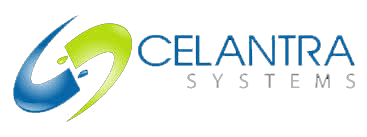Webinar Series 2021-Mysteries of the Universe
Session 1 -How to Manage Intercompany Eliminations to Avoid FX Variances-
Again, and again, we have tried. Never quite managed. Always, there is some unreconciled balance left at the end of the month. We review Oracle tools that will make this problem go away. We will look in gory detail at the best ways to ensure the ending intercompany balance is always ZERO after we are done. Because that’s whole point of intercompany – we all work getting I/C transaction created, but in the end – they should just disappear.
Session 2 - 20 years of Intercompany automation - Where do we go from here?
For 28 days we write invoices from and to each other, then spend 2 stressful days working to reconcile and make the whole thing. We always felt “there must be a better way.” In the late 90s we started with automated journal off-sets across entities, then I/C drop-shipments to customers and internal sales orders. Later Purchasing and Project I/C was added and multi-node transactions. And still – it feels like we are far away from a complete solution. What is the future? Where should we look? How will the process develop? Experts from the industry will discuss
Session 3 - Cloud and EBS Costing, You Can Track & Eliminate Profit in Inventory. A conversation with experts.
Is Cloud Costing any better? Oracle introduced profit in inventory concepts with Release 11i; you could accrue the profit from the sending organization into the receiving organization without some form of customization or manual journal entries. But even in Release 12 the design was not complete, as the Oracle Cost Management and related modules did not have the underlying logic in place to relieve the inter-company profit in inventory for when the goods are shipped to the customer or otherwise scrapped or disposed of. So how would you approach tracking and eliminating profit in inventory in R12 vs. "the Cloud"?
Session 4 - Data Access Sets, Ledger Sets and Hierarchies - usage and benefits
The Cloud GL is a upgrade on the R12 capabilities with the Ledger Sets / Data Access Sets and now with the use of hierarchies in reporting and other areas within the application it provides a very flexible way to perform financial reporting and analysis with ease. The General Ledger balances being posted to the cube automatically aggregates to your parents in your hierarchy for each CoA segment and makes inquiry and reporting faster.
We will discuss and talk about options that help you as a user benefit from the hierarchies you create and on the fly reporting options that are enabled due to the hierarchies and also the new reporting tools ( to Oracle ERP-GL), Financial Reporting Studio and SmartView. Join us to have a quick overview and then a discussion on capabilities, challenges and overall benefits that can be gained with these new structures and tools.


